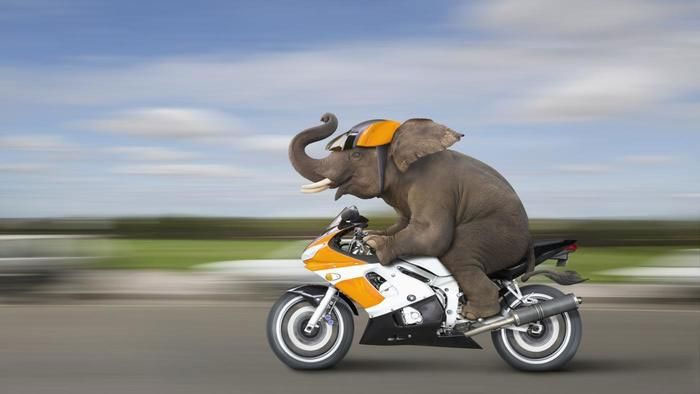Are animals still evolving?
This process began with the first living things and will continue until there is no more life. What makes today's evolution so compelling is that in some cases it happens at a very fast pace. It is often so fast that people can see these changes in just a few generations.
This rapid evolution may be man-made , and may be driven by climate change and other environmental factors. By pushing the environment to its limits, humans have forced animals to evolve in creative ways, such as relying on hidden genetic mutations or long-term dormant genes to help. They respond to the needs of today's life.

Humans have forced animals to evolve in creative ways.
The mosquitoes that live in the Lon Don subway system are perhaps the best examples of this rapid evolution. Just about 150 years ago, workers worked hard to dig tunnels that would one day contain pipes. At some point when doing this work, some mosquitoes sneak underground and settle there.
Since then, these underground residents have grown into their own unique population. While the underground mosquitoes organize grand feasts on the human body, others still live on the ground, having a strict diet of birds. More importantly, the two groups are no longer able to crossbreed successfully.
Although experts have not yet agreed on whether these two groups represent two species or two branches of the same species, it is clear that evolution took place in a relatively short period of time.
But how did the slightly larger species cost?
Perhaps you thought that these creatures would not be able to evolve as quickly as regular mosquitoes, but it turns out that rapid evolution is not limited to the insect world. Sea urchins off the coast of Australia have recently been divided into two subspecies, which reproduce at completely different times and cannot successfully mate with each other.
The ten small lizards left on Pod Mrcaru in 1971 underwent tremendous changes in just three decades - they developed better bite force, bigger heads, and completely new digestive tract to survive. in the native environment. Blue whales and dwarf whales in Antarctica seem to be joining together and are forming a hybrid species, possibly due to climate change.
As for the final example of evolution, consider the mighty elephants. Hunted in large numbers for their valuable tusks, these mighty beasts evolved to completely eliminate ivory.
By 1969, more than 10% of females in an area in Zambia had no tusks; by 1989, that number had skyrocketed to 38%. This change is due to a rare genetic variation that allows elephants without tusks to thrive, while their tusks have been extinct by poachers.
- See evolving evidence on your own body
- A lot of our body parts will
- Discovering fish is evolving to prepare water to live on shore
- Dinosaurs stopped evolving before being extinct
- The answer to the mystery of the evolutionary origin of the turtle
- People were born due to
- I can't believe these are creatures that will live with us in the future
- The first application of self-evolving capabilities
- Anatomical sight of a
- Why are prehistoric animals so much bigger than animals today?
- The ten biggest errors developers have with databases
- Men will not disappear
 Animal 'suffering' after hibernation
Animal 'suffering' after hibernation Why do goats climb well?
Why do goats climb well? Scientists were surprised to see chimpanzees eating turtles
Scientists were surprised to see chimpanzees eating turtles Giant catfish died deadly due to drought in Thailand
Giant catfish died deadly due to drought in Thailand